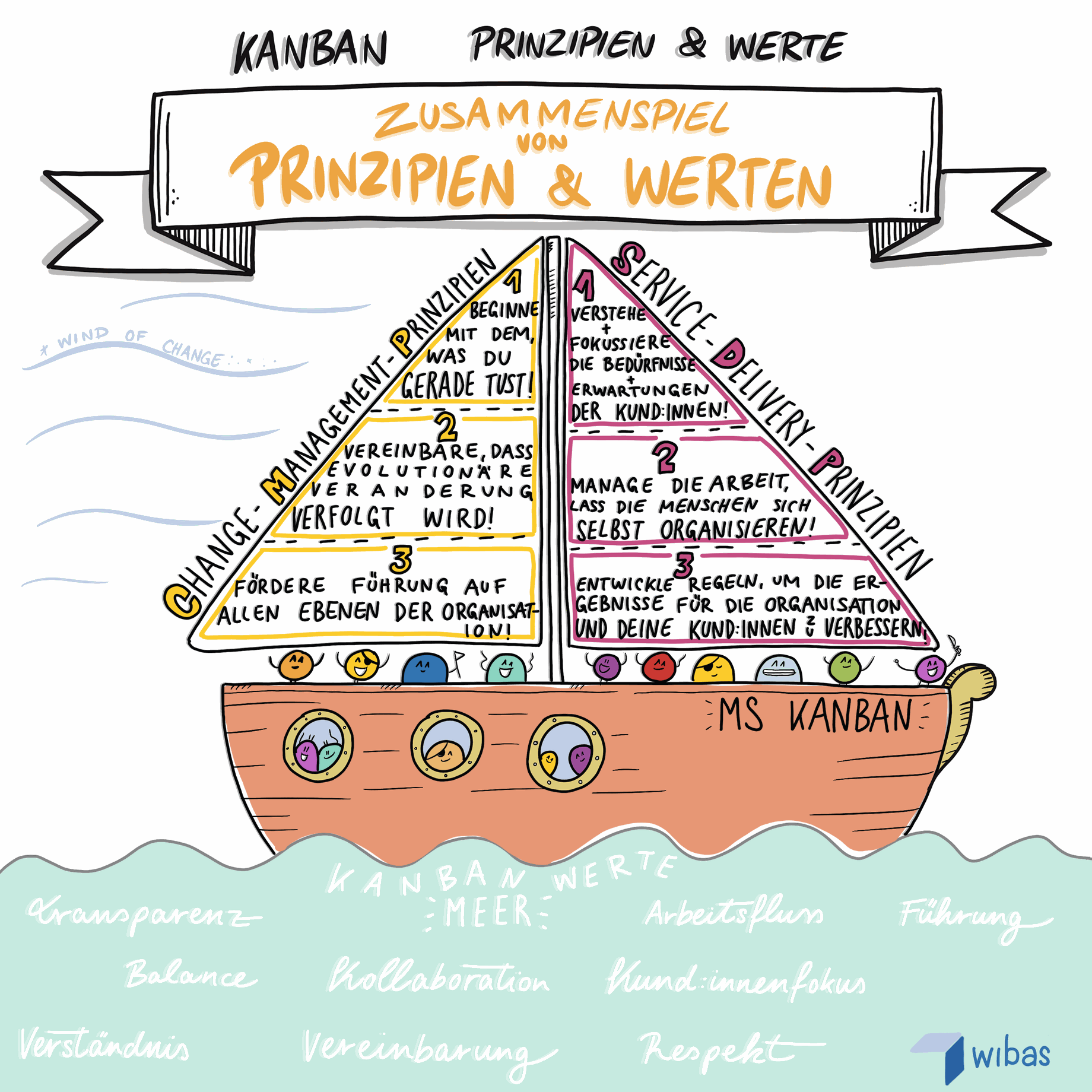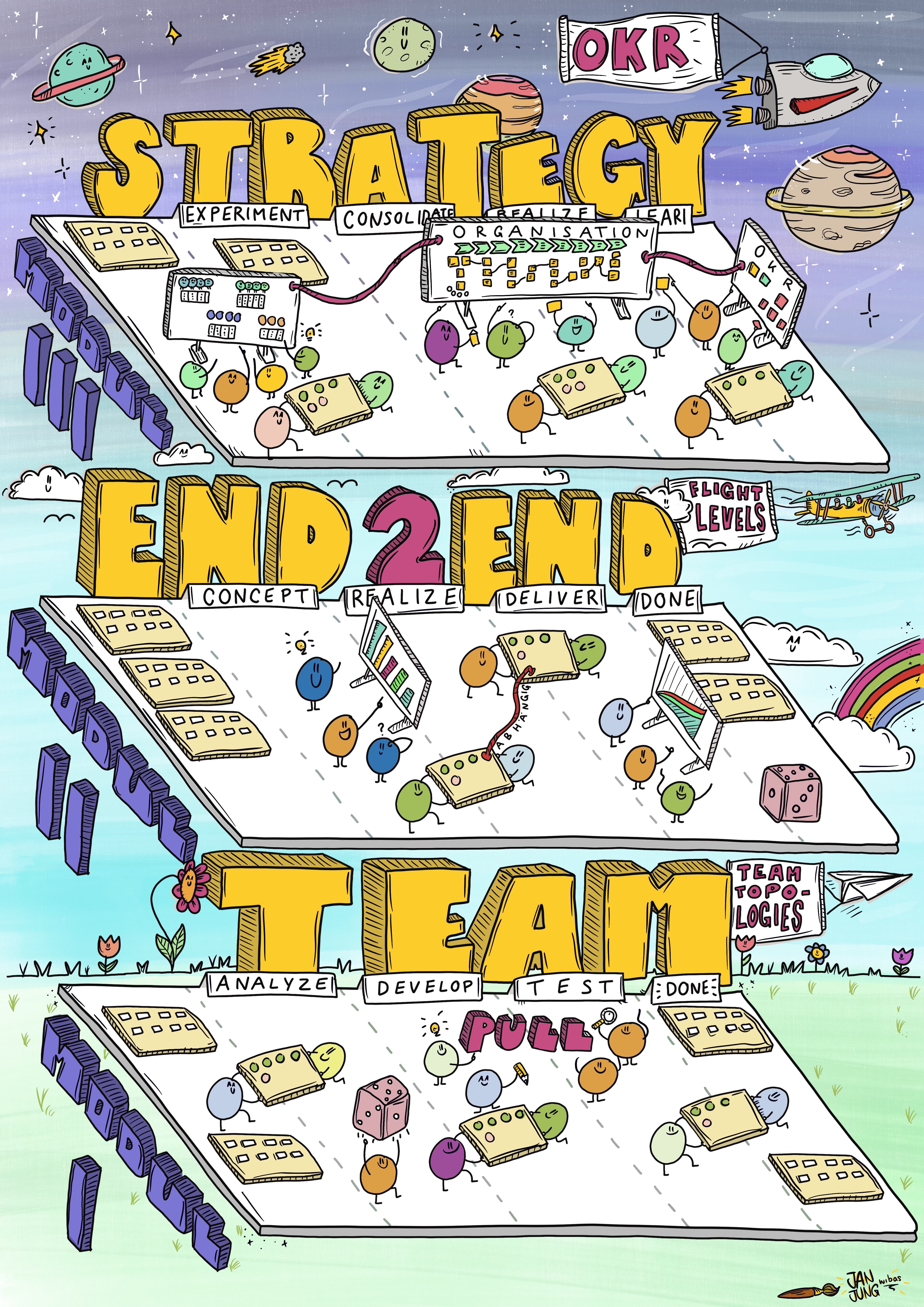Q&A
What is Kanban?
Kanban is a management method from the lean toolbox to get work flowing along the value chain - from the creation of an idea through to delivery. In Kanban, work does not have to be planned or controlled by a manager. Through visualization and the pull principle in a self-regulating system, a team can organize its work independently and optimize processes step by step. Kanban is used in many teams to carry out tasks together effectively and efficiently.
Kanban - more than just a board full of tasks
Kanban typically uses visualization of value-adding work steps via a Kanban board, usually mounted on a wall or displayed in software. However, if you think of Kanban as a board full of colorful pieces of paper, you underestimate the agile framework.
Kanban is capable of much more.

The 6 Kanban Practices
-
Through visualization, Kanban makes the current status of work and impediments visible at an early stage.
-
Parallel work is limited to the actual systems' capacity. This is implemented through so-called Work-In-Progress (WIP) limits. The focus is on completing work before new work get's started.
-
Through this optimization, the flow of work is managed. It becomes more equally distributed and hence, more predictable.
-
Shared, explicit agreements within the team provide a common understanding of the work, for example, what it means when work is done.
-
Regular feedback loops help to reflect and adjust teamwork.
-
The team improves and develops together by conducting experiments based on collected data.
Service Delivery Principles and Change Management Principles
Every organization is a network of interdependent services with rules governing how they interact. Therefore, the following principles apply to the provision of services within Kanban:
-
Understand and focus on customer needs and expectations
-
Manage the work, let the workers organise themselves
-
Evolve rules to improve the results for the organisation and your customer.
In addition to Kanban practices, the following change management principles come into play when Kanban is successfully implemented:
-
Start with what you are doing right now.
-
Agree that evolutionary change will be pursued.
-
Promote leadership at all levels of the organization.
Especially the first principle enables the introduction of Kanban without the effort of a big change project. Simply start and develop in small steps.

Concept of the 3 Agendas
Kanban supports companies by aligning its practices and principles with the following guiding principles:
-
Focus on sustainability
-
Focus on service orientation
-
Focus on survivability
The explanations are based on the official definition of Kanban for knowledge work by David Anderson and Andy Carmichael "The essence of kanban-compact".
 Start simple - at any flight level
Start simple - at any flight level
No matter what challenges you are currently facing: Whether it's optimising an operational team or managing work at a strategic level for an entire company - let's talk about Kanban... and simple start.
Give Julia Stiegelmayer a call. She is looking forward to talking to you about how you can use Kanban.
"Kanban is much more than the typical Kanban boards with cards. I'll show you what else the management method can do."
Kanban System Design (KMP I)
Understand Kanban and discover benefits in our certified Kanban System Design training from Kanban University.
Kanban System Improvement (KMP II)
Deepen Kanban knowledge: come to the certified Kanban System Improvement training of Kanban University.
Kanban Compact
Summary of the Kanban framework for your pocket. As a "cheat sheet" it includes the most important elements of Kanban.
Experience agility in 4 hours
Getting people excited about agility quickly reaches its limits. Experience agility with us in simulations - and many things quickly become clear.
